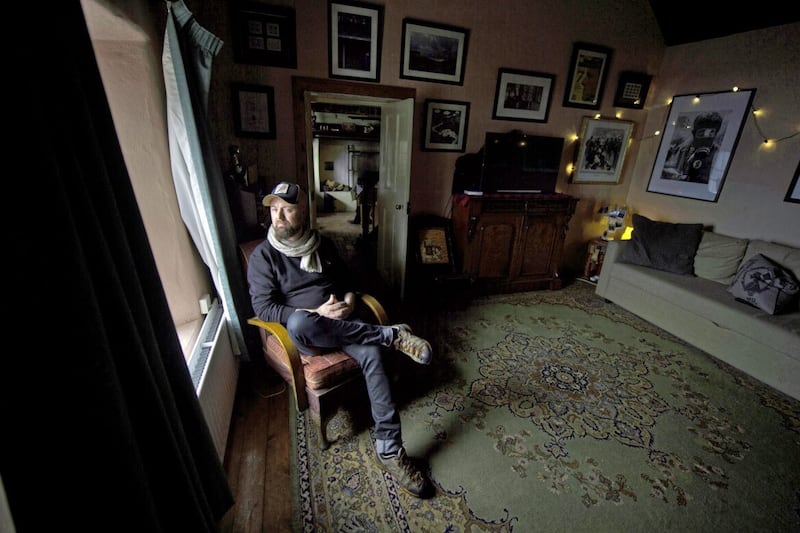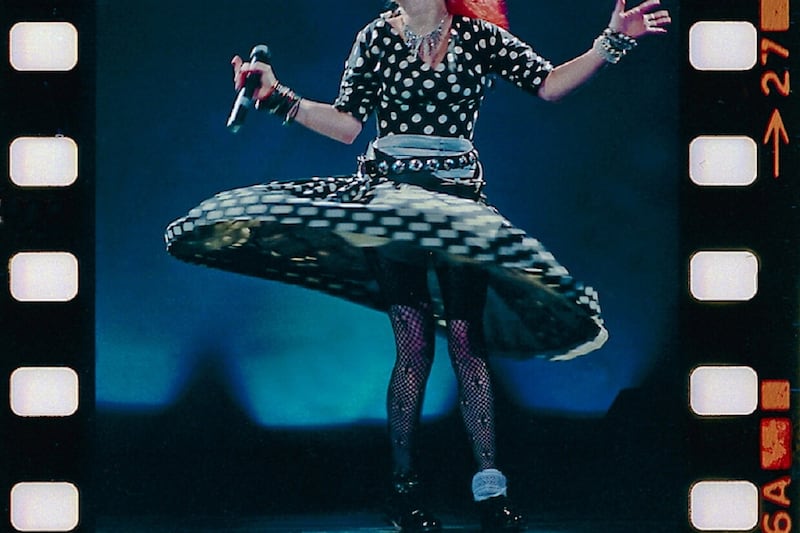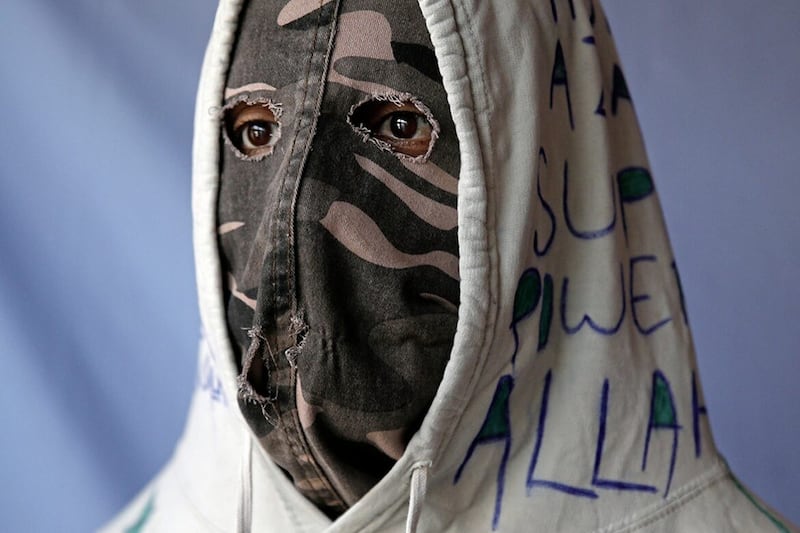"I'M A film-maker, I'm always looking for interesting stories," explains director Gary Lennon of what led him to make I Dream in Photos, his new documentary about Pulitzer Prize-winning photojournalist Cathal McNaughton.
In this case, the Dublin director found his next 'interesting story' in the Irish News: back at the start of the Covid pandemic in March 2020, we carried an interview with the Co Antrim-born photographer in which he discussed his decision to step away from photojournalism (which he got his first taste of as a trainee photographer with the Irish News, working alongside award-winning snapper Brendan Murphy in the late 90s), perhaps permanently.

"I saw the article that you did, and a couple of others," explains Lennon.
"It was just kind of an intriguing story, you know – especially since there's not many people on the island who have had that level of success. I mean, he's our only Pulitzer Prize winner. So I was intrigued."
In the Irish News piece, McNaughton explained how his 2019 Pulitzer win as part of the Reuters team covering the plight of Rohingya refugees in Cox's Bazar in Bangladesh coincided with him being blacklisted by the Indian government.



Unable to return to his post as Reuters India's chief photographer, and with his elderly parents also ailing back home in the north, the then 40-year-old Cushendall-born photographer made the call to put his 25-year long career – which also included stints with the Press Association and the Daily Telegraph – on hold to return to Ireland.
He began living in an isolated Waterfoot cottage with only his dog, Murphy (no relation to the Irish News legend), for company – and without a camera by his side for the first time in 25 years.
"I'm still a photographer, I just don't have a camera at the minute," he told the Irish News.
"I was forced to look at the situation and step off the rollercoaster, basically."

As well as discussing how he still believed in the power of news photography to spotlight important stories from around the world, McNaughton also admitted that his career had impacted negatively on his personal and family relationships, hinting at the psychological toll of documenting human suffering on a daily basis.
All of this is unpicked in greater detail during the course of I Dream In Photos – its title a direct quote from the photographer himself.
"There's a reason Cathal has had his success," offers Lennon, whose previous documentaries include Piano Dreams and A Doctor's Sword.

"It's because of the skills and the passion and his personality that he has – but you know, there is a downside to that as well. And that is in terms of some of his relationships with family and friends. He's very honest about that.
"It's a well-worn story about the war photographer, who experiences some type of trauma or some type of damage – you know, they have many wives, they often have addiction issues with booze or drugs, because the thing is, it's a narcotic job. It's an addictive job – the buzz of it causes these things – and there is a pay-off to be made for that.
"But one of the more interesting things for me at the start of the filming process was that Cathal didn't feel he was like that. He was [taking news photos] on the streets of Belfast as a 15 or 16-year-old, and he did this for 25 years, but he kind of genuinely felt he wasn't like any of the others.

"Then he went to shoot the Rohingya in Bangladesh, and I think it's reasonable to say that actually was a traumatic event [for him] – yet the parallel was that it was also his ultimate professional accolade. So that was very interesting for us to talk with Cathal about."
Three years in the making, Lennon's film captures McNaughton during a period of reflection, healing and transition: the camera records him living alone in the wilds of Waterfoot, where he ponders the ups and downs of his career to date, visiting his father, and staging Valley of Tears at Belfast Exposed, an exhibition of portraits documenting both sides of the civil unrest in Kashmir.



"It's quite a difference from living amongst 30 million people in Delhi," observes Lennon.
"To go from the full-on intensity of his job as the head of Reuters in India to just suddenly living on his own in a cottage that looks like it could still be in the 19th century, it's quite a change. There's definitely a bit of The Quiet Man about the place."
Having warmed up to each other via regular remote interviews while Covid restrictions were still in place, filming eventually began in earnest – though not quite at the pace McNaughton was accustomed to working at.
"Baring your soul on camera is a very difficult thing to do," concedes Lennon of the trust placed in him by the Pulitzer winner.
"I'm not sure if I personally would be able to do it myself. It takes you to have confidence in the film-makers, and that was something that took the course of a couple of years. We would go up to visit Cathal, Cathal would come and stay with us in Dublin, and back and forth.
"So it did take quite a while, and the way Cathal is used to working as a photographer is that he just goes to a place, he picks up his camera, and it's very instant – but what we were doing involved an awful lot more. So he was quite surprised and a little frustrated at the length of the process, I think.
"I deeply respect him having the confidence in us to treat his story fairly and respectfully – and hopefully in a kind of an entertaining, engaging way."


The film utilises McNaughton's photo archive dating back to his early days on the streets of the north, including a striking photo taken at the one year commemoration of the Omagh bombing, right up to his powerful work in Bangladesh and Kashmir – the later snaps interwoven with McNaughton's own helmet cam footage of him actually taking the shots in the midst of chaotic and potentially lethal civil unrest between Indian security forces and Kashmiri rebels, scenes which have uncomfortable echoes of the violent clashes on our own streets during the Troubles.






"We thought it was really important to show why we were making a film about him," explains Lennon.
"The reason for that is the quality of his work. We wanted to show the audience how amazing his work is, and also his approach to his work.
"I think you get a real sense from that head cam footage of just how intense those riots were – the energy that goes through them and that, at any second, someone can just fall down dead. The Indian troops don't mess about. They would consider it a fight for the sovereignty of their country."
By the end of I Dream in Photos, McNaughton has reached a point where he once again feels able to pick up his camera and return to work as managing editor of the European Pressphoto Agency. I wondered if spending three years discussing and processing his career to date for Lennon's camera might have had something to do with that.
"I think he went on this journey himself, which was happening in parallel to the film, and I'm not sure if one led to the other" offers Lennon, "but what Cathal was saying to us in 2020 was very different to what he was saying to us by autumn 2022.
"He kind of grew, and I suppose he learned certain things about himself – we just attempted to capture them in the film."
:: I Dream in Photos will premiere at Docs Ireland at 6.15pm, Saturday June 24, at QFT Belfast, where Gary Lennon and Cathal McNaughton will take part in a post-screening Q&A. Tickets via docsireland.ie.








